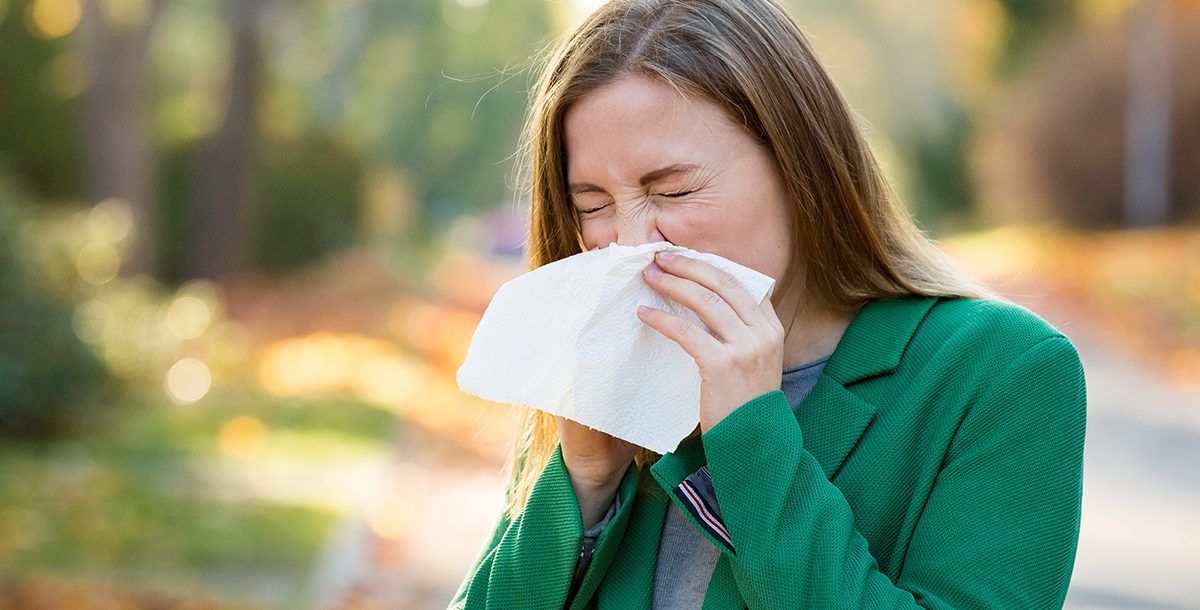Seasonal allergies can make you feel miserable and are tough to prevent since the environment triggers them. The most common fall and winter allergies cause symptoms similar to a cold. However, these symptoms can linger for much longer.
While you can’t eliminate the causes of allergies completely, there are things you can do to lessen exposure and the effects. And of course, you should talk to your primary care provider about your fall allergies so you can make a treatment plan together.
What are the most common fall allergies?
Some of the more common causes of fall allergies include ragweed and mold. Ragweed produces pollen and is active until the first frost. Like tree pollen in the spring, this plant can bring misery to those who are allergic.
With more dampness from rain, mold can grow in the fall. Mold often grows in piles of leaves you might be raking or in stacks of wood. And finally, dust mites are more prevalent in the fall, as they thrive in colder weather.
Avoiding fall allergy symptoms
Once you are in a full-blown allergy attack, all you want is relief. Cutting your exposure to allergens can help to reduce these symptoms.
Here are a few tips to help you avoid fall allergens:
- Take a shower, change your clothes and wash your hair after being outside.
- Clear yard debris regularly to avoid mold growth.
- Treat any indoor house leaks right away.
- Keep windows closed to keep pollen out.
- Limit outdoor exposure and aim to go out later in the day when the pollen counts fall.
- Take your shoes off and don’t wear them inside your home.
- Use a dehumidifier to reduce dampness and prevent mold growth.
- Wash your linens in hot water.
- Vacuum and dust your house regularly.
- Keep pets that go outside bathed to avoid a buildup of pollen in their fur.
Again, it is important to talk to your primary care provider about any fall allergy symptoms you are experiencing. They will be able to provide more treatment options, including possible medications.
Learn more about the primary care services we offer at Bon Secours.





